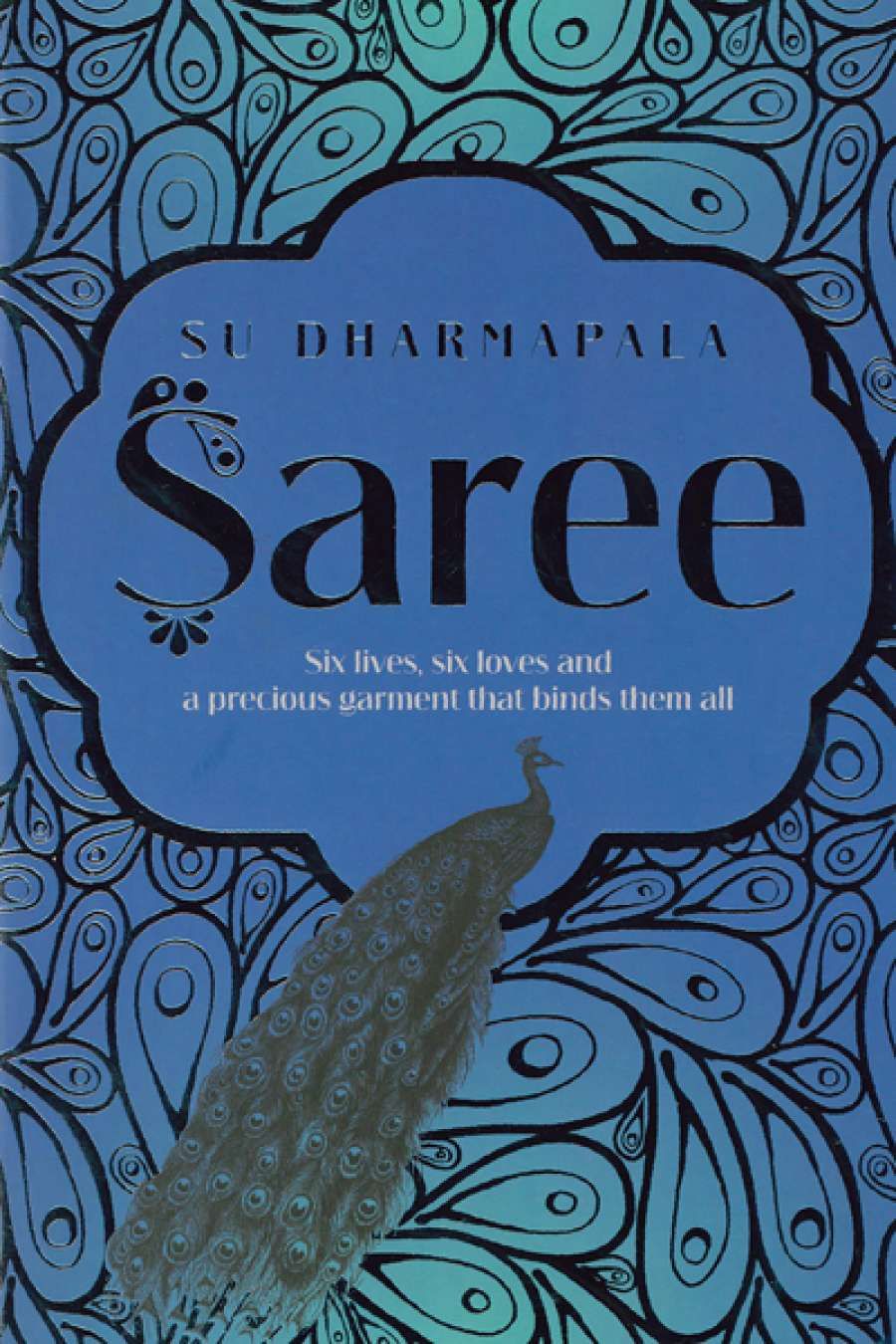
- Free Article: No
- Contents Category: Fiction
- Review Article: Yes
- Article Title: Sri Lankan fairy tale
- Online Only: No
- Custom Highlight Text:
‘Six lives, six loves and a precious garment that binds them all’ are words on the cover of expatriate Sri Lankan Su Dharmapala’s second novel. The book’s six sections follow the sequence of tying a saree – knot, first drape, pleats, second drape, the fall, and the finishing. Six lives are cleverly connected by a precious silken saree in Sri Lanka, India, and Melbourne. Initially, one imagines that the characters will be drawn from the young aspirants selected to compete for apprenticeships at a progressive saree mill in south-west Sri Lanka. Several, with their tutors, will reappear, sometimes surprisingly; others will vanish.
- Book 1 Title: Saree
- Book 1 Biblio: Simon & Schuster, $29.99 pb, 583 pp, 9781922052933
- Book 1 Readings Link: booktopia.kh4ffx.net/dogz1K
All is not froth and fairy tale. For much of the book’s time span, while private crusades are waged, a terrible civil war rages on the island of Sri Lanka. The families in Saree are both Tamil and Sinhalese, and everybody suffers. Nobody is left unscarred; descriptions of attacks on individuals and communities are vivid and dreadful. Trust is betrayed, friendships shattered, and innocent lives destroyed.
‘The book plunges into fairy tale, particularly evocative of the Brothers Grimm, charming in part, utterly horrifying in others.’
As cloth is woven the novel steadily takes form, the creation of the saree a supplementary weft to the narrative. For those interested in textiles, the book offers a wealth of detail of spinners and weavers, dyers and designers, embroiderers and entrepreneurs. Mahinda, a clever boy from a poor Sinhala family, first appears at Nayaru Lagoon in northern Sri Lanka. He becomes fascinated with a process of silk production that need not destroy the lives of his wild silk moths. Mahatma Gandhi promoted the idea of ahimsa, meaning to do no harm to any living creature, and ahimsa silk encompasses this. In a nocturnal version of Gabriel García Márquez’s cloud of yellow butterflies, Mahinda’s silk moths flutter in a magical aura, even more miraculous as silk moths have lost the ability to fly and can merely vibrate their powdery wings. Despite suffering shockingly at the hands of the Tamil Tigers, Mahinda finds success and returns to the story in the unlikely setting of Ferntree Gully.
The third section, ‘The Pleats’, tells the story of the servant-girl, Pilar. The dialogue is slightly irritating with ‘de’ and ‘dey’ replacing ‘the’ and ‘they’, and the exclusive use of the present tense. Another small irritant is the glossary. Useful though distracting, if glossaries do not contain all the vernacular words rendered in italics, what is their point? Poor little Pilar is wronged by her demon in-laws but saved first by her grace, then by the saree and thus the intriguing plot continues. A home-screening of the famous film Mother India, Pilar’s first movie, affects her deeply. This 1957 Hindi classic tells a story not so different from those of the Brothers Grimm and Hans Christian Andersen. The heroine is a poverty-stricken village woman who, against all odds, sets a goddess-like example of morality, self-sacrifice, and goodness. She is the ideal Indian woman, a metaphor for the brave young republic and a model for Pilar.
Mother India stretches further, to the fourth story of Sarojini, the devadasi. The film’s title was chosen to counter and challenge Katherine Mayo’s 1927 polemic of the same name. It vilified Indian society, religion, and culture at the time of India’s demands for self-rule and independence. Racist, pro-imperialist, and prejudiced, Mayo instanced male sexuality as the core of many of India’s problems and the publication created a predictable outrage across the country. In Slaves of the Gods (1929), also by Mayo, a chapter deals with the devadasis, literally servants of the gods. Young girls were, and are, dedicated to the gods, to tend a temple and perform rituals as dancers. Their past high status has crumbled; now they are regarded as little more than prostitutes. A sadly more accurate picture than Dharmapala’s somewhat preppy image is found in ‘The Daughters of Yellamma’, in William Dalrymple’s Nine Lives (2009).
The importance of duty and worship pervades the novel as a major thread, in particular the veneration of Saraswati by Hindus and Buddhists alike. Goddess of knowledge, music, arts, wisdom, and nature, she is associated with flowing water. Her physical beauty embodies free-flowing knowledge, therefore rendering it supremely alluring. Her vehicle is the white swan, most beautiful of birds and itself symbolic of metamorphosis. She appears in many forms, and believers can have no doubt of the efficacy of prayer. Does this indicate a happy ending? You will have to read Saree to find out.


Comments powered by CComment